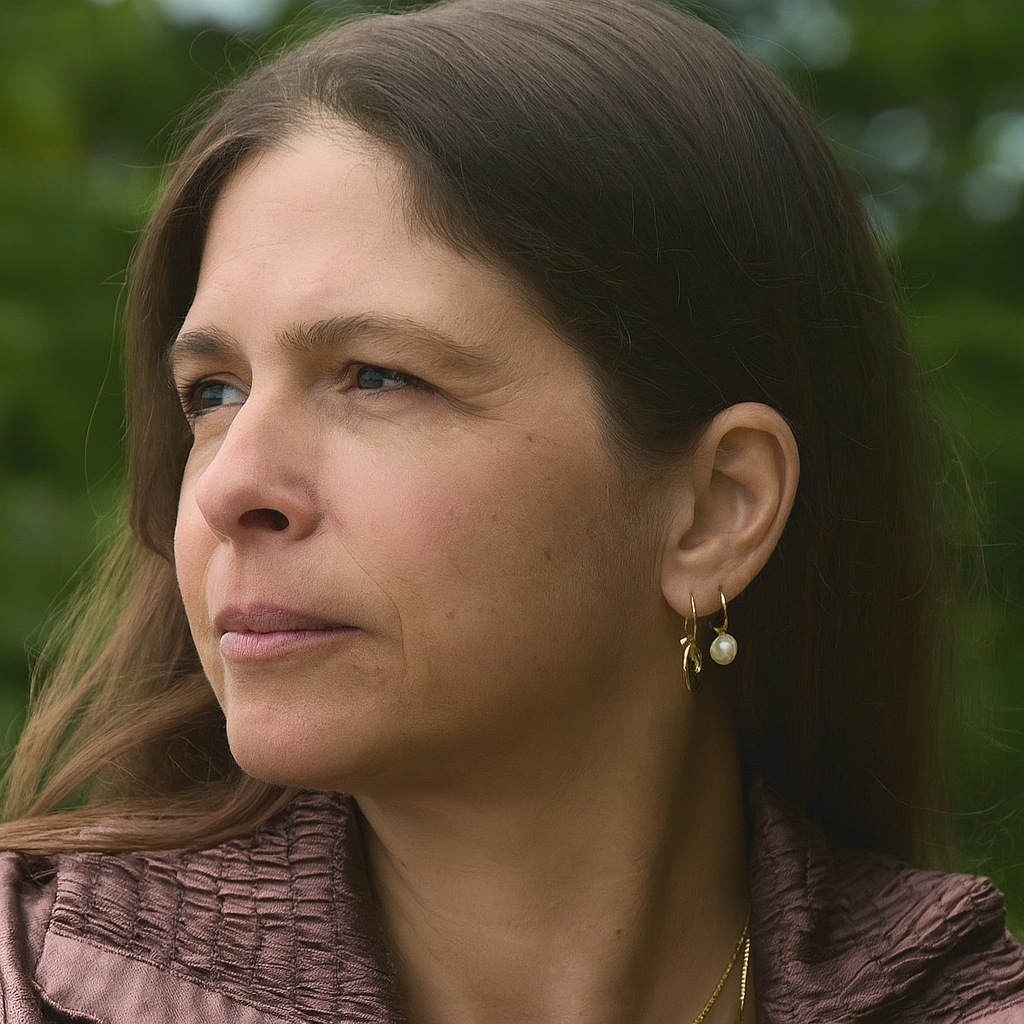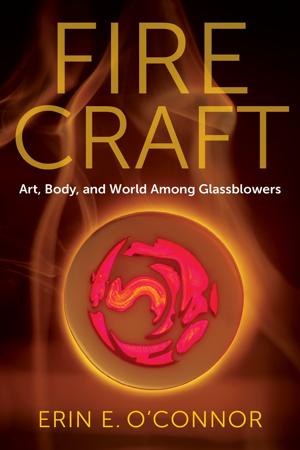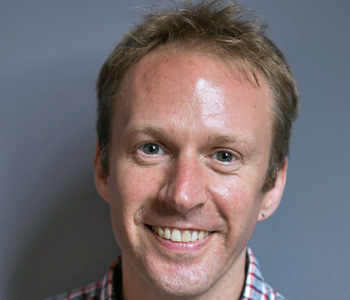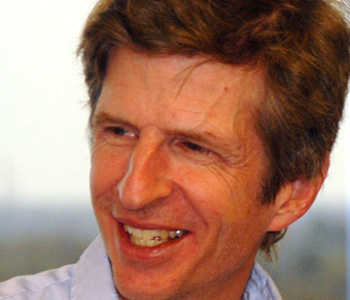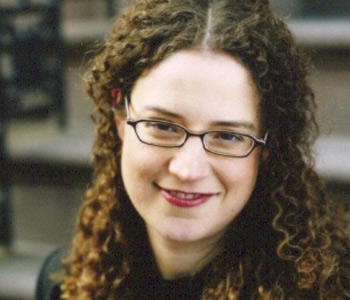Erin E. O'Connor Fire Craft: Art, Body, and World Among Glassblowers Columbia University Press 296 pages, 5 x 8 inches, ISBN 9780231218443
In a nutshell
Fire Craft is a story about the meaning of making, of glassblowing, which is simultaneously a more general story about the human condition. It documents my experience learning to blow glass in the hotshop of a New York City glassblowing studio, where glassblowers ply their art on small teams amidst fire, smoke, and heat. Through this immersive and sensuous first-hand account, Fire Craft details the experience of embodiment and its relation to the acquisition of skill. So much of the "meaning" of an art is entangled with bodily experience. From this insight, I address the broader entwinement of human intentionality and materiality as one of “elemental complicity”. On the one hand, humans are human. But, on the other hand, there's so much to being human that is non-human. For the glassblower, this has so much to do with fire. Realizing this made me further realize that I’m not an ethnographer of the elements but rather an elemental ethnographer. My story about learning to blow glass is not simply an account of the transmission of skill among humans, that is. It's also about how the non-human world, matter, nature, the environment, materiality - whatever you might call it - contributes to and shapes that human experience.
It’s in this way that Fire Craft fundamentally addresses the question of ontology, a theory of being. Studio glass canonically distinguishes itself as glassmaking liberated from the factory. In one sense, this is accurate. But the Euro-Western ontology that separates man and the natural world persists. It’s this legacy that permits me to connect the studio glass movement, settler colonial glassmaking, and imperialism in Chapter 1, The Glassy State: Setting the Pot of Man and World, where I begin my investigation of elemental complicity with “earth, land, and ground”. From there, the reader follows “water, flow, and transmission" in Chapter 2, Embodied Knowledge: The Ebbs and Flows of Skill Acquisition, “fire and heat" in Chapter 3, Fire and Sweat: Calorific Bodies and Teamwork, "air" in Chapter 4, Blow: Time, Space, and the Vessel, and the fifth element, “quintessence” in Chapter 5, Quintessential Craft: Cupmaking and the Turns of Métis.
Dialing out from elemental practical imaginaries, Chapter 6, Materia Erotica: Love and Strife in the Hotshop, considers the logic and practices of their orientations. The Conclusion, Heart of Glass, embraces the contradiction at the heart of human intentionality and elemental complicity. If you look at sociological or anthropological studies of craft, they typically describe making from human intention to object completion, accounting for the acquisition of practical knowledge therein. The Craftsman (2007) by one of my doctoral advisors, Richard Sennett, is a case in point; Sennett considers the role of failure and even, drawing on my early work, the significance of materiality. That said, Fire Craft is unique in its deep dive into the elemental imaginary and experience that animates the craft. It’s no coincidence that the very last line of the book, the one to conclude four years of fieldwork and a decade of thinking and writing: "Admittedly, I am still hot and bothered. Long ago infected with the glass bug, I'm not sure I will ever recover. Gladly so.” Glassblowing’s fires illuminated the meaning of making and the human condition, but so too did they become me, body and soul. We are beyond human. We are more than human. All humans are.
The wide angle
The answer to the wide angle is, in large part, constituted by a personal path - so much so that it constitutes the book's Prologue. I come from a family of makers and my upbringing was largely a series of apprenticeships. On my father's side, I learned all things pragmatic: sailing, fishing, skinning a fish, hunting, building a deer blind, shooting a rifle, and running a business. On my mother's side, I learned all things artmaking and moreover, the possibility of that coupled with intellectual pursuits. They were Methodist pastors, artists, gardeners - average folk in Ohio via Prussia. Among other skills, my grandfather was even a neon sign maker. They lived among paintings, art supplies, and weathered books in German script and ancient Greek. And that brings me to the turning point of the Prologue.
As I describe there, this life of making and material did not converge with my academic pursuits until 2003. Intent on earning a PhD in Sociology, I was enrolled in a graduate seminar called “The Sociology of Museums” at the New School for Social Research in New York City. When discussing semester projects, one student said, “Detroit artists.” After class, I approached him, explaining that my great-grandfather had been a Detroit artist. At the beginning of the following class, he slid a postcard printed with three still-lifes of flowers across the table to me. I immediately recognized my great-grandfather's work, assuming the postcard was from the mid-twentieth century when he lived. But when I turned it over, I read: Fred Papsdorf, American Magic Realist, Opening Reception, Friday, December 5, 2003, 5-8 pm. Stunned would be an understatement of what I felt. He worked a 9-5 gig checking milk bottles in a factory and painting at home in the evenings against his wife's wishes. Seeing the contemporary life of his work spoke to the power of craft to build worlds. It called on me to return to my passion for materiality and making. I commenced a comparative ethnography of craft the following semester, including pottery, weaving, and glassblowing. Fire Craft is testimony to what happened next.
I also want to credit the place where I grew up: the shore of Lake Huron in northern Michigan. I woke up every day to her sea-sky horizon and all that both extended toward it and with which it was entwined: waves, ice, moonlight, sunset, fish, the boats receding perspectivally. If an elementally-thick horizon doesn't call you on a quest, I don't know what does. She’s perhaps the Ur-mother of Fire Craft. I’m a first-generation college student, but I think I've been a new materialist since birth, long before discovering Karan Barad’s work in 2016.
A close-up
The hot parts, of course! This includes two chapters, “Fire and Sweat” and “Materia Erotica". In "Fire and Sweat," I get my first taste, so to speak, of intracorporeality. I'm working on a team of glassblowers. It's my big break that's arranged for me by my instructor, Paul. Who says, "Girl, if you really want to learn glass, you got to work on a team.” The big day was on a hot and humid midsummer day, when it was nearly ninety degrees by 9AM. I "worked the doors" that day, meaning I opened and closed the doors of the glory hole, fired to about 2000 degrees Fahrenheit. By the time I got home, I had white veins of salt crusting my clothes, skin, and hair. I had to peel off my clothes and, once showering, washed my hair and brushed my teeth multiple times. I could feel the salt crystals fall. It was an “Aha!” moment in which I saw the kinship of the glassy state and heat as viscerally shared and experienced among human bodies and a non-human medium. I call this intracorporeality. It differs from the intercorporeality, which assumes discrete bodies in collaboration.
In "Materia Erotica,” I explore love in the hotshop. The protagonist is Sarkis, a deft glassblower known in the hotshop as a "rock star”. We fall in love, become engaged, and then break off the engagement. Years later, Sarkis died from cancer at 45 years old. Years after his passing, I wrote the chapter. It’s an exploration of “making-love” and “making love" as orientations of becoming as production and as intracorporeality. I come to understand production as a heteronormative logic and intracorporeality as a queer orientation. I use the Greek concept of the pornê to unpack this. I came upon this concept in an analysis of Plato's Timaeus by classicist and architectural theorist Ann Bergren. It indicates a woman who wanders between households, referring to a prostitute, but philosophically, Bergren connects the pornê to the unorganized and chaotic elements of a pre-Socratic cosmology. They formed a world, that is, without the so-called rule of law, namely a rational logic external to, and the organizing principle of, illogical matter. As an elemental ethnographer, I understand myself too as wandering, taking up queer residence with the salt and heat of intracorporeality instead of the straight logic of producing vessels, for example. To understand the pornê in terms of modern sexual prostitution would be to miss the point entirely. I explicitly address the reader twice in the book. Once, on this occasion, given the importance of this point:
“I invite you, dear reader, to feel the philosophical resonance of this tale from and with that chaotic and wandering participation of and with the anomalous elemental world. Intracorporeality unbound. Making ever-emergent will never be contained; the cup will always overflow. The pornê lets it do so. If empty, she puts it back on the shelf and perhaps sets the table with it that evening for company. It’ll be a lovely dinner party. Cups will break; cups will overflow. The ways of love and strife are many, contained and uncontained.”
Writing this chapter, I knew it was an homage that spoke to Sarkis. The day after I completed it, I fell into an inexplicable fever for a solid week.
Lastly
Fire Craft is one of a kind. There is no other ethnographic monograph of contemporary studio glassblowing. Biographies exist, but they don't have the view and experience of blowing glass from the inside-out. To be clear, my glassblowing skills are modest. But, I do know it and that sense makes a world of difference to the narrative. I write not about glassblowing but from glassblowing. This includes fellow glassblowers and our shared experiences and social world. I want Fire Craft to live as a historical record of everyday life in an American hotshop, interwoven as it is with its philosophical and socio-political significance. Legions of glassblowers have produced the ubiquitous glass objects of modernity, but have largely been forgotten in the dustbins of history. This reflects the denigration of craft and manual labor broadly speaking in the West more than the meaning of their practice, which brings me to my second point.
Making makes you a better thinker and thinking makes you a better maker. Fire Craft offers a persuasive case for vocational education. In Fire Craft, the reader learns about embodiment, the sensing extension of the human body into the world through objects, like a hammer in hand. Where do we feel the end of the hammer? At the nailhead that it strikes. My consideration of embodiment and the dynamics of apprenticeship reveals the role of the sensing human body in learning. Fire Craft is not nostalgic. But, it does show that handwork matters. Through it, we learn to problem solve, collaborate with others, attend to materiality, and realize that we’re part of a world. Handwork contributes to the aesthetic, civic, intellectual, social, and environmental dimensions of human life. This is not at odds with the "Information Age".
An example is the historical chapter of the book, The Glassy State, mentioned above. It was through my attention to the medium of the art - hot glass - and the furnace of its making that I began to see how studio glassblowing was interwoven with imperial and settler colonial glassmaking. Typically, sociology distinguishes work via the mode of production; the small team of craft glassmaking versus semi-mechanized early industrial glassmaking, for example. It was only through my wonder about glass that I saw how theories of the division of labor were woven from a Western ontology that has long separated man from nature, making him master of it. This insight allowed me to retell the story of glassmaking at Jamestown in 1612 as one of American “plantation”. It’s such contributions that distinguish Fire Craft as seeding a field of critical glass studies.
Publishing Fire Craft is a beginning rather than a conclusion. It has opened an entire inquiry into the medium and the mines and minerals of its making. This further decenters the human narrative, turning to what I'm calling a symgeology of studio account. I hope that Fire Craft gives back to the world of studio glass as much as studio glass continues to give me - fire for thought.
